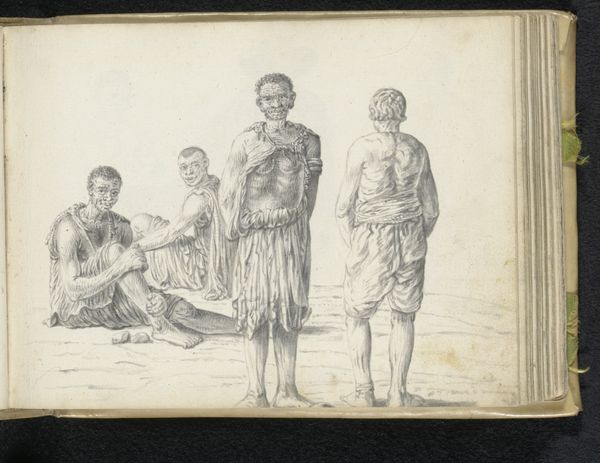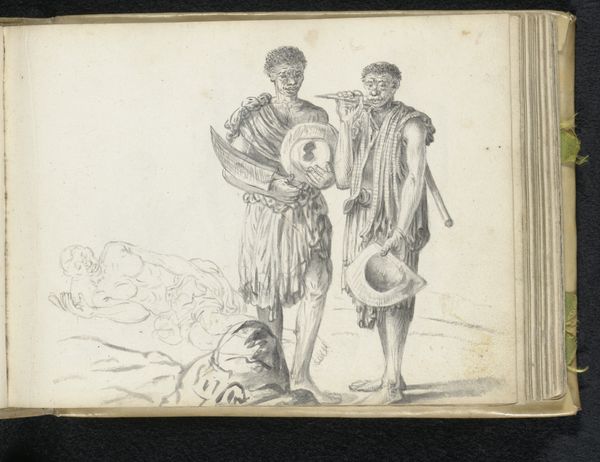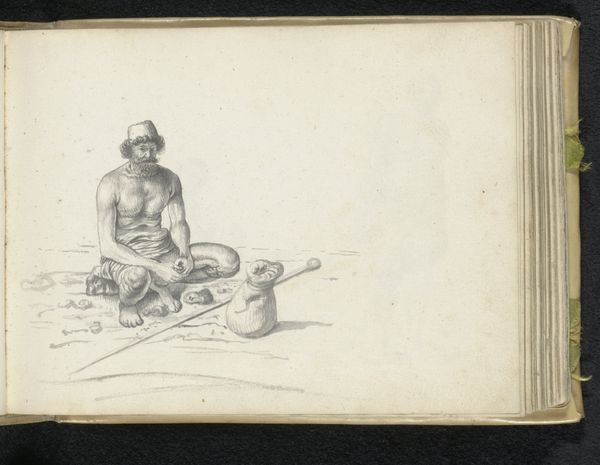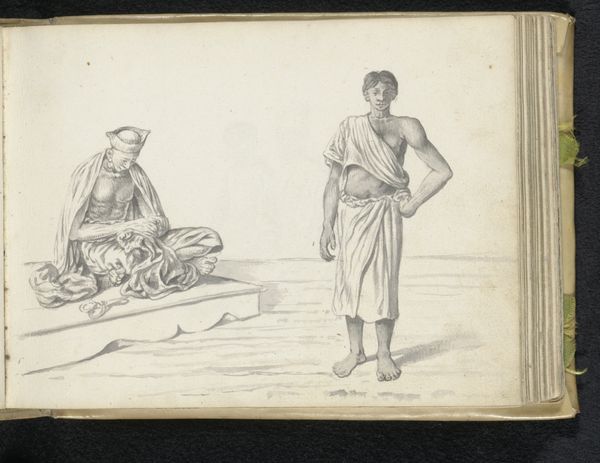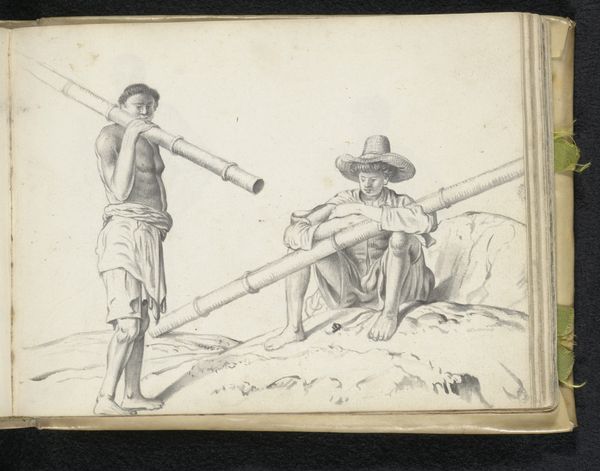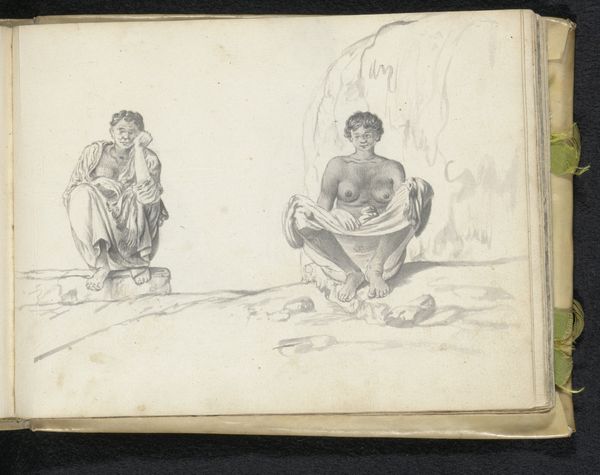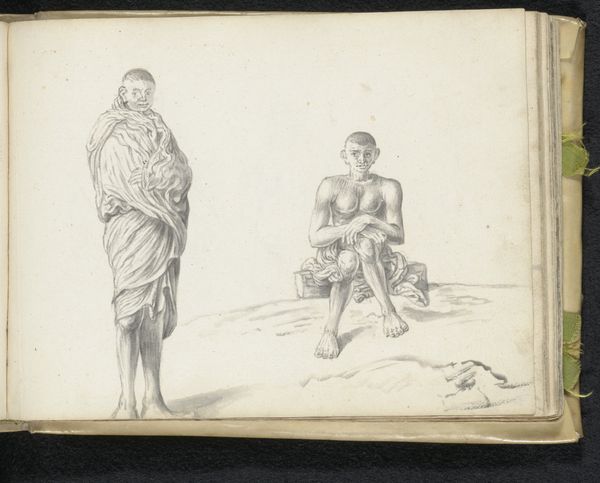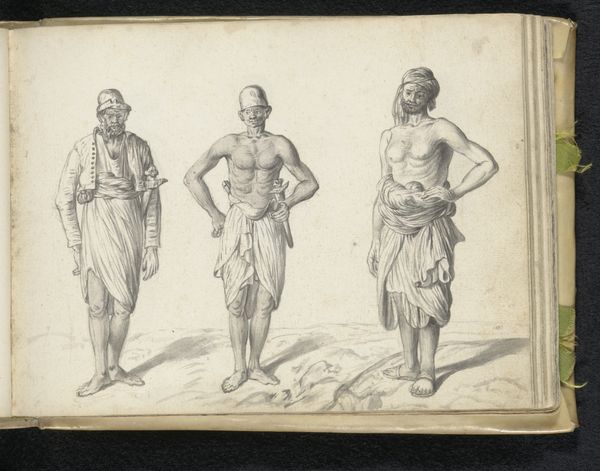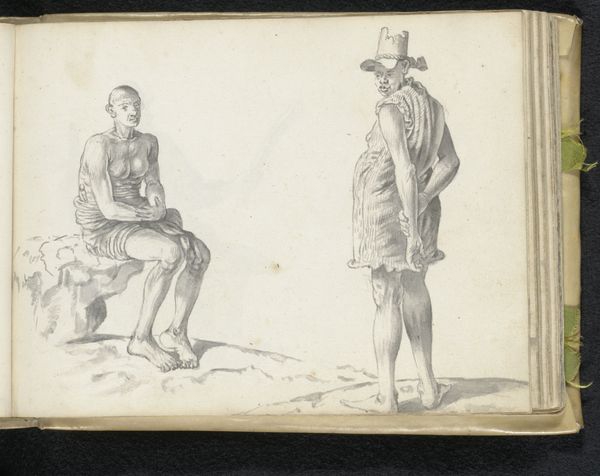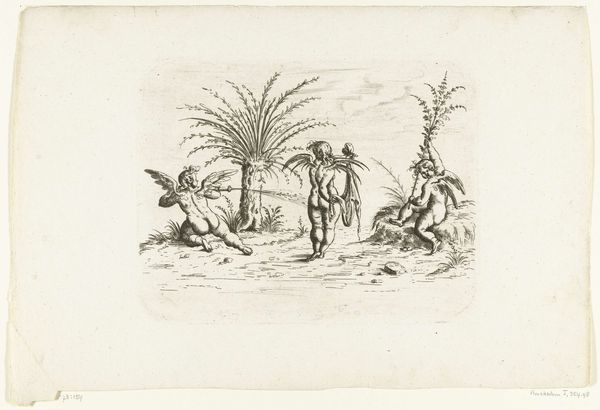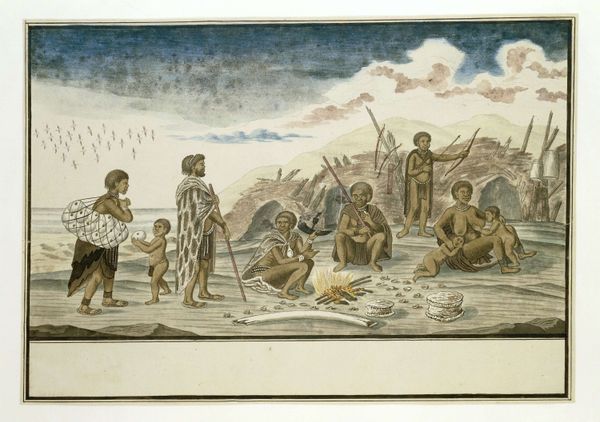
drawing, paper, pencil
#
drawing
#
dutch-golden-age
#
figuration
#
paper
#
coloured pencil
#
pencil
#
genre-painting
#
realism
Dimensions: height 148 mm, width 196 mm
Copyright: Rijks Museum: Open Domain
Editor: Here we have "Two cinnamon peelers at work", a drawing in pencil and colored pencil on paper by Esaias Boursse, dating back to 1662. It's rather stark, wouldn't you say? Just these two figures on what seems like a blank plane. What strikes you most about the composition? Curator: The sparseness is precisely where its strength lies. Consider how Boursse manipulates line and form to define space. There's a rhythmic quality to the repetition of the crouching figures, a mirroring effect that’s reinforced by the stark horizontal of the ground. Do you notice how little background detail is provided? Editor: Yes, it almost feels like they're suspended in…nothingness. The focus is entirely on the figures and their actions. The textures achieved with the pencil are interesting, particularly in rendering their skin. Curator: Precisely. And note the use of light and shadow. Boursse isn't aiming for photorealism but rather uses tonal variations to suggest volume and form. He is capturing their movements as the peelers apply a sharp tool on what we could argue represents an industrial age that has barely dawned. It's the relationships between these formal elements – line, form, light, shadow, space – that create the image’s power. Are you familiar with semiotics? Editor: I've touched on it, but could definitely use a refresher! Curator: Consider how the “sign” of labor is constructed here. Each line, each shading decision, contributes to our understanding of the scene. The artist is in conversation with his time and context in what he included in the art or otherwise. Editor: It's interesting how this formal analysis almost makes the work more compelling than simply considering it a historical document. Curator: Exactly! It's about moving beyond simple representation to understand how meaning is generated through visual language.
Comments
No comments
Be the first to comment and join the conversation on the ultimate creative platform.
